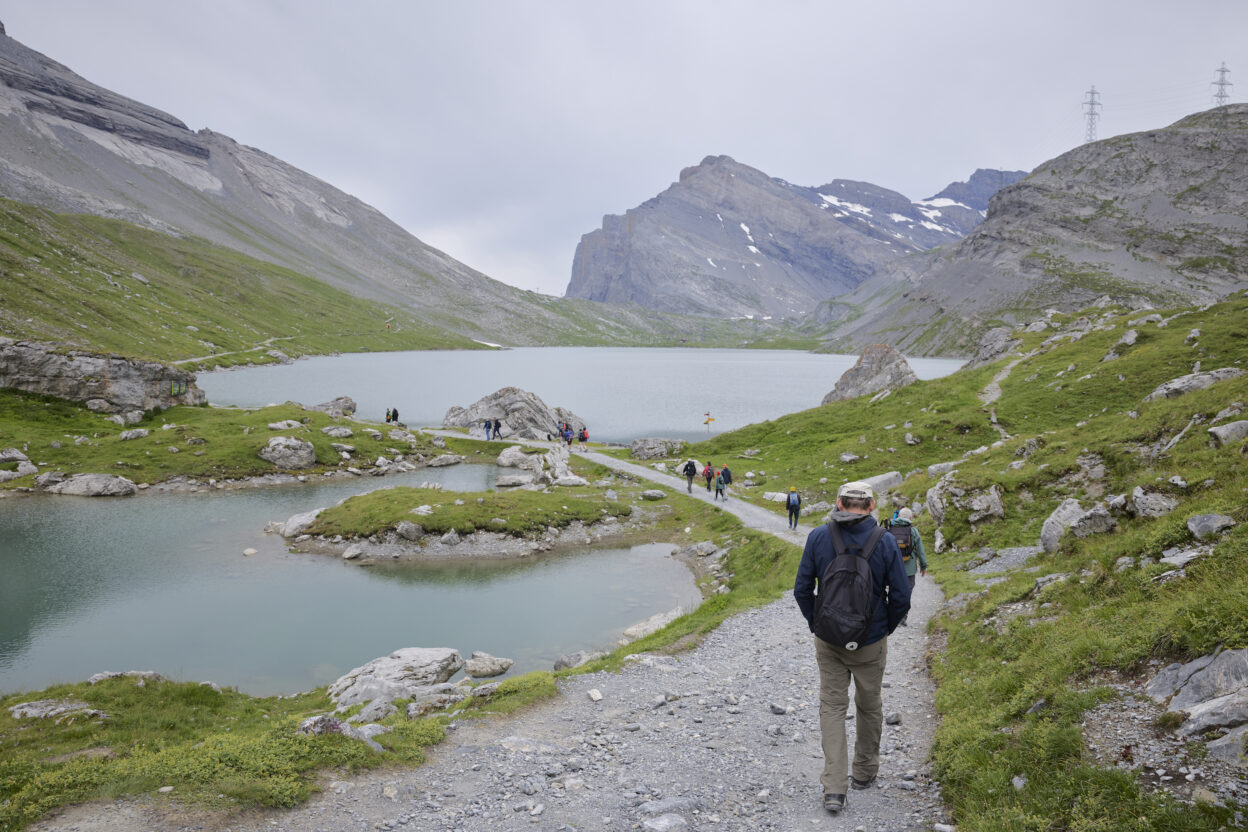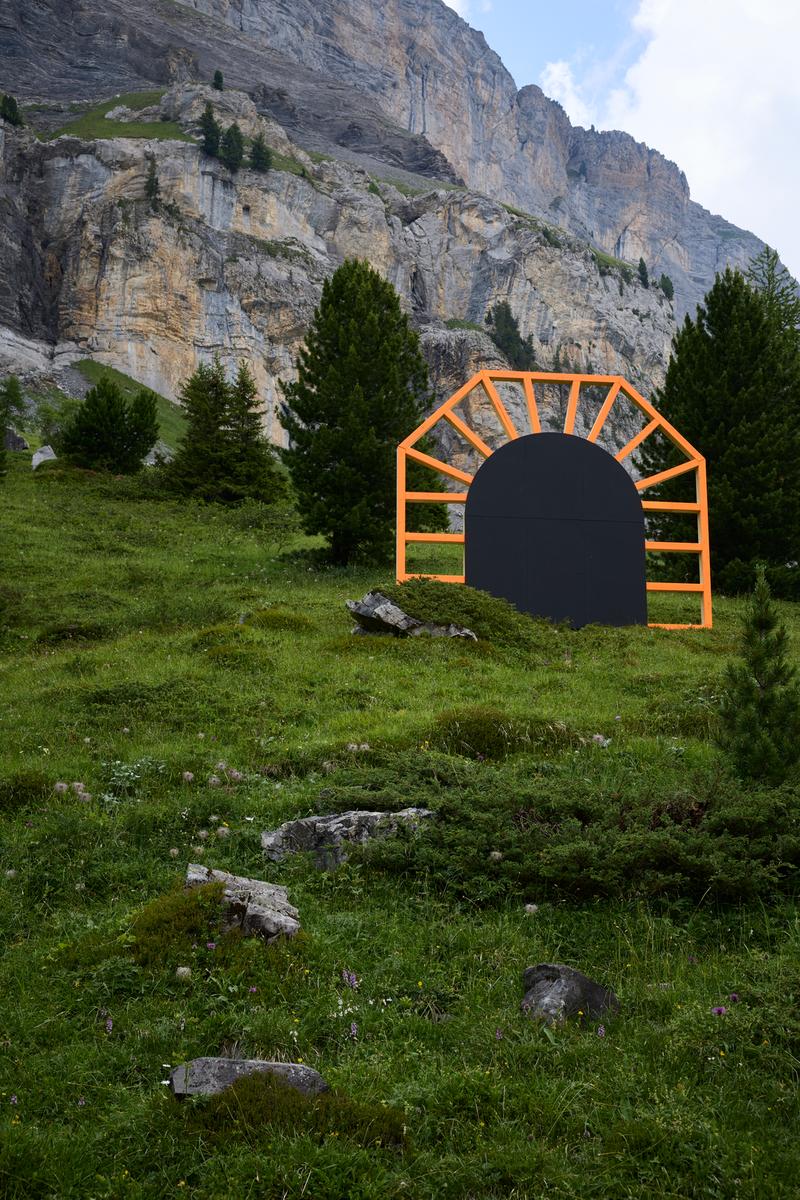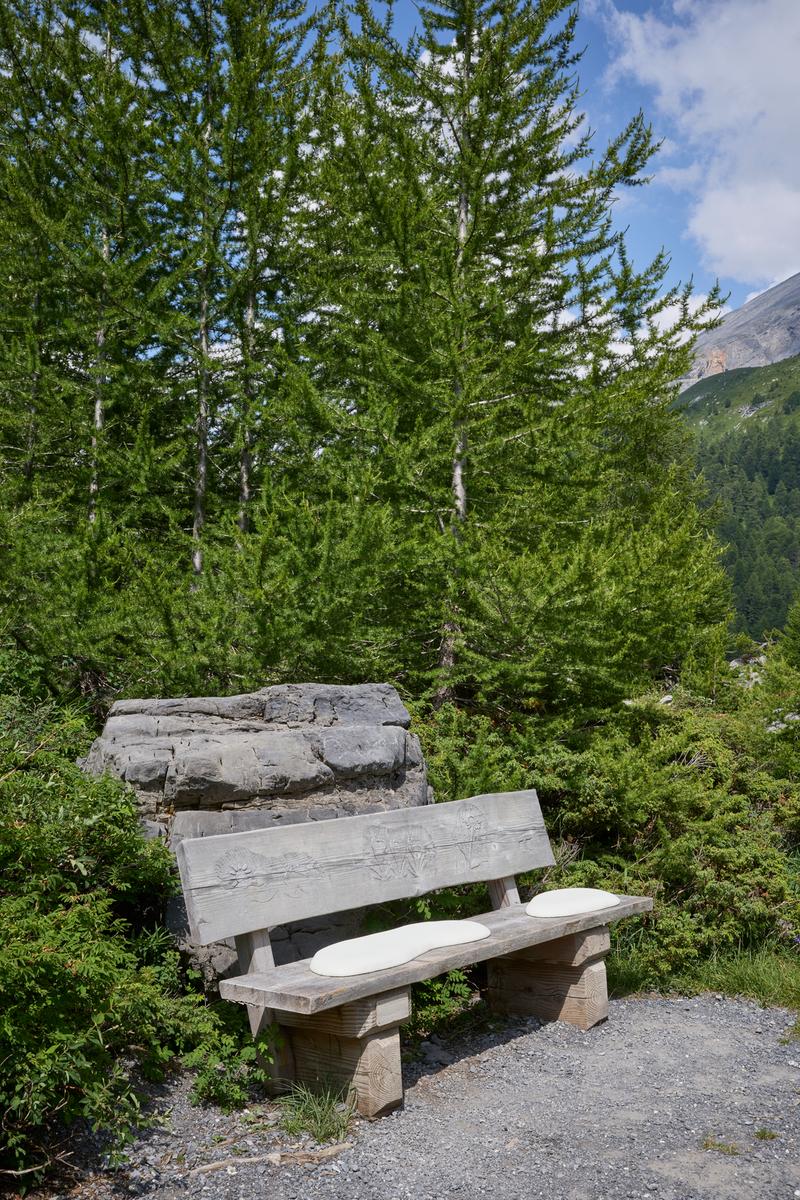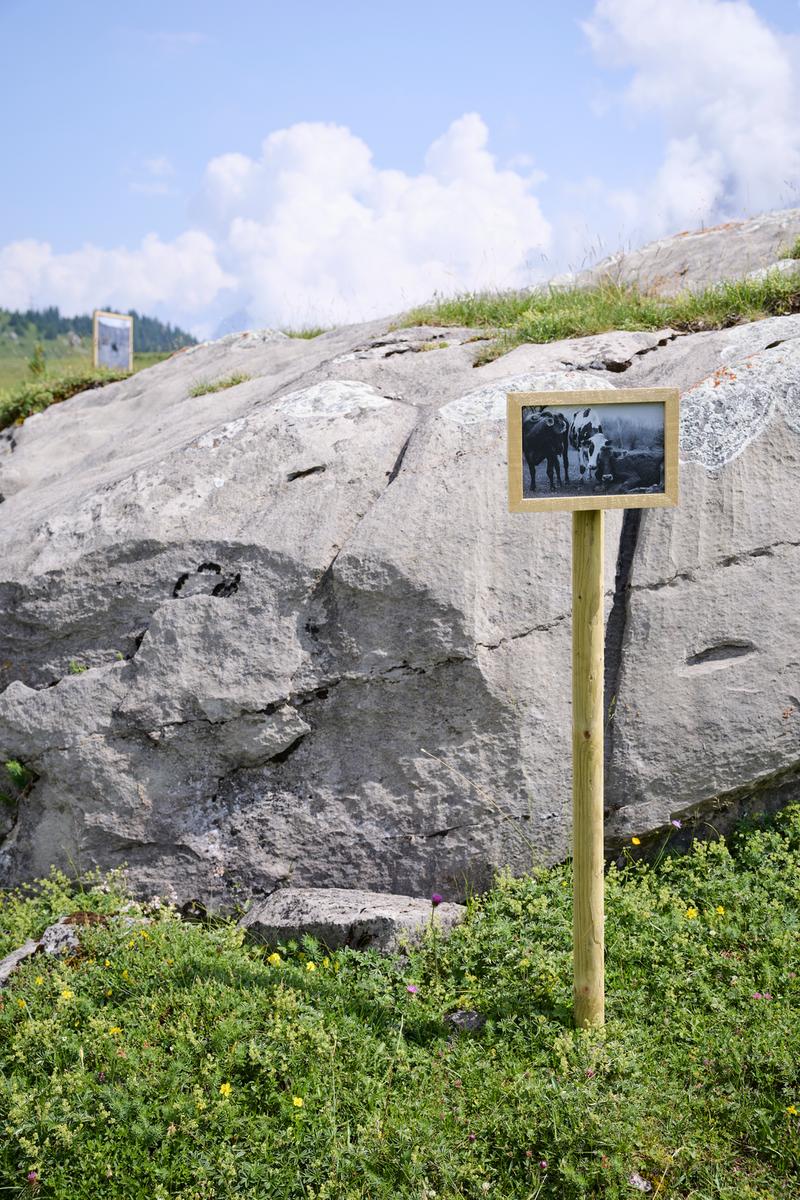Sustainability
Sustainability
In accordance with its statutes, the SAC is committed to the sustainable development and preservation of the Alpine world, as well as mountain-related culture. When organising its art exhibition, the SAC took various sustainability factors into consideration. Here are a few examples:
Ecological sustainability
The Gemmi was deliberately chosen as the location for the art exhibition because
- it already attracts a lot of visitors
- it is easily accessible by public transport
- in terms of the landscape, the area is already encumbered by infrastructure such as extra-high-voltage power lines, cable cars and buildings.

Various works encourage visitors to consider the relationship between humans and nature. For example:
- Sibylla Walpen / Deux portails: What would the Gemmi look like today if the planned motorway had been built in the 1970s?
- Bob Gramsma / *dän-, PD#24341: How long will it take for the first trees to grow on the Daubensee as a result of rising temperatures?
- Christina Hemauer und Roman Keller/ Snow depth panorama Gemmi and Josef Loretan / Snow patches: How will snowfall develop in future, and what will this mean for nature and tourism?


As with any human activity, organising the SAC art exhibition consumes resources and causes emissions. The SAC’s aim is to minimise its environmental impact.
- Most of the artworks are recycled or reused, and some materials were rented.
- All printed materials, such as flyers and booklets, were printed on recycled paper.
- Unfortunately, assembly and dismantling were not possible without helicopter flights. However, these were carried out within a timeframe of less than three hours to minimise noise and greenhouse gas emissions. One hour of helicopter flight causes CO₂ emissions of slightly less than one tonne.
Economic and social sustainability:
In addition to ecological sustainability, the impact on society and the economy must also be taken into account.
- The artists in the portfolio are diverse in terms of gender and place of residence/origin. Several artists are from the region.
- Admission to the exhibition is free and it is open to the public.
- The added value generated by visitors remains in the region.
- The easy hiking trail also makes the exhibition accessible to those who find it more challenging to walk in the mountains.
- The aim of the art exhibition is to inspire people interested in art for the mountains – and mountain sports enthusiasts for art and culture.
Various works invite reflection on the social issues of our time, for example:
- Sislej Xhafa / family album woven soil: War in Europe, migration
- Lena Maria Thüring / shifting grounds: Origin, migration, identity
- Fragmentin / Markers: Energy supply
- Séverin Guelpa / Open Salar System: Trade



